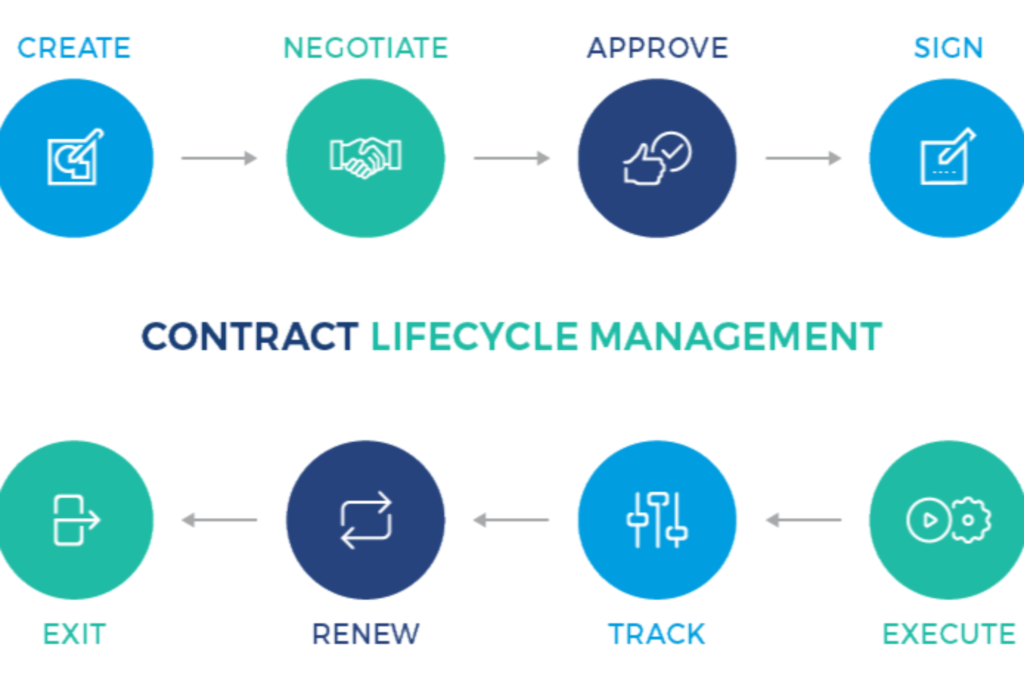Key Steps and Best Practices to Draft a Fail Proof Settlement Agreement for In-House Counsel

It’s a fact that most attorneys encounter settlement agreements in their professional careers. This Article provides a comprehensive checklist for crafting effective settlement agreements and highlights the crucial details that in-house counsels need to know to protect clients from future litigation.
Checklist for a Fail Proof Settlement Agreement
The following is a checklist that outlines the most important segments of a settlement agreement and expands on the salient points of each.
1. The Parties – be sure to define them clearly.
2. Payment Terms and Considerations – for best practice, don’t just describe the settlement amount. This provision should be as detailed as possible. For example, give the specifics of when payment will be made, the exact amount, how it will be made, etc.
If your client is the party making the payment, consider the timing to obtain the approval to disburse the funds. If there are installment payments, spell out when these will be made and whether there is a grace period, etc.
Be sure to include every performance or obligation, i.e., transferring or releasing property, returning goods, dismissing a lawsuit, etc. Include enough verbiage to give clarity to both parties as to what they must do.
3. Scope of Release – this is the gist of the settlement agreement. Counsel should pay close attention to this section. Identify the releasing party or parties, and the released parties. To the extent it’s applicable, you may want to include the affiliates or subsidiaries of the company you represent.
On the claimant side, you may want to limit or not include specific parties involved who may want to bring a claim later.
Determine which type of release the settlement agreement will have. There is “specific release” (limited to terms described in the agreement) and “general release” (terms described in the agreement plus any potential claims).
If it’s specific, have an express reservation of rights to bring claims at a later date. If it’s a general release, specify whether it will include unknown claims.
4. Dismissal of Legal Proceedings – if there is an ongoing legal action, be sure to include its dismissal as part of the conditions.
5. Condition(s) – condition clauses must be very strong to protect a client.
If there is concern the other party may not perform their obligation, then the release should be conditioned on them performing their obligations before the release provision can go into effect.
Normally, the releasing party will want it to be executed upon the full payment, and the released party will want it executed upon performance.
6. Acknowledgment of Settlement – this often gets omitted from the settlement agreement. However, it’s best to have the other party acknowledge that they understand the terms, that it’s a full settlement of the claims, and that it’s adequate and fair.
7. No Admission of Liability – specify that there is no admission of liability so this can’t be used later on against the releasing party. This can also be helpful for insurance purposes.
8. Remedies in the Event of a Breach – remedies are not limited to breach of contract. You can be creative in your list of remedies, for example: liquidated damages, etc.
9. Representations and Warranties – include as many representations and warranties as necessary, based on the situation. This section is useful if the opposing parties are less sophisticated, and you want assurances that the opposing party has not assigned its claims. (You may want to include an indemnity in regard to the latter in the case that they have.)
Include a representation and warranty that there is no outstanding or future claim, or that the party hasn’t filed any type of complaint or claim with a governmental agency.
Additionally, have the other party warrant and represent that they have the authority to enter into the agreement.
10. Legal Costs – if preferable, the parties should bear their own legal costs which should be specified in the settlement agreement.
11. Attorney’s Fees – include an attorney’s fees clause in case you have to enforce the agreement. There are some jurisdictions where this provision must be included in the contract to be enforceable if there is a breach.
12. Confidentiality – because it is heavily litigated, the language of the confidentiality clause is a very important part of the settlement agreement. A separate section below is dedicated to the subject of the confidentiality provision.
13. Taxes – specify how it will be treated if there are any tax consequences on the releasing or released party to identify who will be responsible for this.
14. Miscellaneous – this provision tends to be boilerplate. If you have not updated your settlement agreement in some time, you’ll want to revise this section.
In the revision, incorporate an integration and merger clause. The merger clause will guarantee that there will be no introduction of parallel evidence that will contradict the terms.
Additionally, the miscellaneous portion of the agreement should clearly state that the agreement is the final agreement of the parties.
If the dispute that led to the settlement agreement was based on a contract which included an arbitration provision, include that arbitration provision in the settlement agreement as well.
The severability clause is also a very important part of this section of the contract, especially when dealing with a hot area of the law like employment where many claims cannot be waived. In other words, don’t take the risk of rendering the entire agreement unenforceable just because one part is. Including the severability clause will help prevent the court from ruling the whole agreement non-enforceable.
And lastly, specify the governing law and venue in the miscellaneous section—the state that you want in order to maintain control, and the venue that is convenient for your client in the event you have to enforce the agreement.
The Confidentiality Agreement
Now that the overall checklist for a foolproof settlement agreement has been covered, the next portion of this recap will go into the vital details of drafting the all-important confidentiality provision.
This is the area of settlement agreements that has changed the most in the last few years, especially as concerns personal liberties. It’s very important to study them and stay up to date.
Some counsel may think that if the parties had the intention and agreed to confidentiality, and this was expressly stated in the contract, they have it covered.
The problem is, that’s not true.
The irony about the confidentiality provision is that it does not adhere to strict contract law.
Updated Best Practices Regarding Confidentiality
The legislation on what can be deemed confidential has changed much over the past 5 years. Be sure to look at your jurisdiction and make sure you follow the rules.
Many of these changes were brought about by the multitude of sexual complaints and the resulting #MeToo movement that started in 2017. It has really modified how confidentiality agreements can be used.
If it involves employer and employee, and the topic involves a sexual harassment claim, age discrimination or gender discrimination, those provisions can no longer be kept confidential.
Biden’s Act, House Bill 445, ending forced arbitration came into effect January 1st, 2022. This because it became overriding public policy that it’s not doing the country any favors sweeping this type of behavior under the rug.
This House bill came into play because there are different rules for arbitration that would help to conceal this type of behavior. The government no longer wants these types of personal problems and issues in the workplace covered up.
Another area that is no longer kept confidential is pay. An employee cannot get fired for discussing pay or disclosing it. It can no longer be a provision of a settlement agreement or offer of employment. The basis for this particular change was not the #MeToo movement, but gender inequality issues.
Additionally, you cannot consider confidentiality provisions for class actions. The reason class actions cannot be kept confidential is, in order for the pot of money to be distributed fairly, the court has to see settlement amounts, what is being paid the class, what the lawyer is accepting, whether there is any reimbursement to a government agency, etc.
Another type of settlement agreement where a confidentiality provision will not prevail is when there is a settlement involving minors or persons with disabilities. That is for their protection.
Additionally, when there is a settlement agreement that includes specific facts or acts or details of an ongoing litigation that is relevant to the litigation, the court will, for the purposes of discovery, overturn the confidentiality agreement.
Another factor to consider regarding confidentiality is, who is it confidential between? The signing parties? The signing parties and the attorney?
This was quite a discussion in one of the seminal cases in the California Supreme Court entitled Monster Energy Company vs. Schechter. The form and content of the attorney’s signature block is not controlling. The court now says that it’s the intent.
Did the attorneys also intend to be bound by the confidentiality agreement?
If you don’t have a separate provision that’s initialed and expressly stating the attorney is bound by the confidentiality agreement, it can be litigated.
The most important thing about settlement agreements is to ensure that the confidentiality provision cannot be open to litigation. In order to do that, it’s important to stay updated on the current best practices and recent legislation.
Sealing Records Before Filing with the Court
Now that we’ve covered the updated best practices concerning confidentiality, the next topic to cover is: what can be done if an acceptable confidentiality agreement cannot be drafted?
There is a myriad of reasons this might happen—the parties can’t agree to one, certain restrictions with state law, or venue. These issues can come up and complicate things.
In this case, you can move to have a settlement agreement sealed. However, this is not necessarily easy because there is a great, enforceable, public policy that says it’s really important for the court to have access to filed records and not be kept in the dark.
But if it’s important to fight for, you must convince the judge that the damage without sealing the agreement will be greatly damaging to one or both parties, and that that interest outweighs the public interest.
If you cannot get the entire record sealed and it’s the concealment of the payment amount that concerns your client the most, you can work to get just the financial portion sealed. But you’ll still have to convince the court that it trumps the public’s right to know.
Non-Disclosure Agreement
A non-disclosure agreement is basically a confidentiality settlement. The whole thing is confidential. If you think your confidentiality provision is going to be challenged, leave it out and draft a separate non-disclosure agreement to protect your client.
They are typically used for intellectual property, trade secrets, vendors, customers, and certain items that have economic value.
Scope of Confidentiality Agreement
How broad should a confidentiality provision be? Well, first, if you’re carving out a separate confidentiality agreement, it should be defined and narrow.
At the point that it’s so broad that you’re throwing in the kitchen sink, you’re better off asking to seal your document with the court if it’s that important to you.
When Is a Confidentiality Agreement Not Important?
If there’s a confidentiality provision that doesn’t really matter, that won’t cause harm, then leave it out. Don’t raise it or bring attention to it.
If the client’s only reason for including it is they just prefer the parties don’t discuss the matter, it may open them up to challenges they don’t want to deal with.
If it’s not critical, rethink it.
Tips for Different Types of Settlement Agreements
Employment Claims
As in-house counsel you are most likely dealing with in-house employees and settlement disputes. As such, there are important tips to know about these types of agreements.
If it’s a general release, you’ll want to be sure not to waive claims that cannot be waived by law. Include a carve out that clarifies the release does not and is not intended to release any claim that cannot be waived or released as a matter of law. In this way you’re limiting the risk of the entire release being unenforceable.
Because the statement just mentioned may not be sufficient, you may also specify which claims are not going to be released.
You can also specify that the waiver and release does not include prospective family and medical leave or a whistleblower award under the Dodd-Frank or Sarbanes-Oxley Acts.
As to the Age Discrimination in Employment Act, especially for employees who are 40 years of age or older—this is an older worker’s benefit protection act that provides strict and specific requirements as to what the waiver, the release, or the settlement agreement must include to waive an ADEA claim.
There are a few requirements, so it constitutes a knowing and voluntary waiver.
First, the release has to be in writing. It has to be understandable by the employee (the document has to be geared to the level of comprehension and education of the average employee receiving the severance offer).
The waiver also must expressly spell out the Age Discrimination in Employment Act by name. It cannot include future claims. The consideration has to be more than what the employee is entitled to, and there has to be a statement that the employee is advised to consult with an attorney before signing the waiver.
You also need to give the employee adequate time to consider the waiver before signing it. If it’s an individual employee, 21 days. If it’s a group or part of a group termination program, it’s 45 days.
This type of waiver must give the employee 7 days to revoke their agreement, and that’s something that cannot be waived. You’ll want to tender the payment at the end of that period, so you don’t find yourself in a claw back situation if the employee decides to revoke the agreement.
Another tip on employee agreements is, if your client has a returning employee, they may want to have returning guidelines for them. Such as what kind of information they can discuss with other employees, what cannot be said, and if there is a question, who they should talk to.
Regarding the tax consequences in employee agreements, for employers that settle claims alleging sexual harassment or abuse, if the settlement agreement includes a confidentiality agreement or non-disclosure provision, the company cannot take a tax deduction for that settlement payment. That can be a big consideration on whether to include a confidentiality agreement.
Tort Claims
In the case you have multiple defendants and only one of them settles, you may want to check with your jurisdiction if the common law still applies. That common law being the release or dismissal of one tortfeasor would release all the others.
In California, that common law is no longer applicable, but check in your jurisdiction to see if it still holds.
Don’ts
With regard to minimizing the risk of rescission, if your client has more knowledge of material facts of the dispute or the other party hasn’t conducted full discovery, you may want to mitigate the risk that the less knowledgeable party brings a claim to rescind the settlement agreement because they didn’t know the material facts.
Include something to the effect that the opposing party acknowledges that the other side is more knowledgeable or has better access to material facts, that they’re willing to forego their opportunity to conduct discovery and that the settlement amount is fair.
It’s not fail proof, but it will provide your client with a stronger argument.
On the other hand, if your party is the one who lacks information, you may want to protect your client from non-disclosure of material facts. You may want to add that each party has truthfully disclosed all information that has been requested and that they have fulfilled their duties to disclose.
Additionally, if you want to minimize the risk of rescission claims from the other side, consider adding something for fraudulent inducement in the release. So that any fraudulent inducement claims are included in the claims being released.
Don’t include a provision that will prevent the other side’s attorney from representing similar claimants. That would be a violation of ethics.
You may want to consider the cooperation and non-cooperation provision as well. If you want the other party to not cooperate in the private sector with other potential claimants, you can include that clause. It will be enforceable to the extent that it prohibits voluntary assistance in private litigation. It would not be enforceable to prevent disclosure pursuant to a subpoena or for an ongoing investigation by public agencies.
Also, for a cooperation clause, if your client has lost something or the opposing party has infringed on certain rights, you may include a cooperation clause to ensure that the other party will cooperate with your client if they need to execute or file certain documents, or if a certain action has to be taken to restore the rights of your client.
Don’t confuse a covenant not to sue with a release. A covenant not to sue does not extinguish the rights of the releasing party. If you want to make sure the other side no longer has the right that they are claiming against your client, then it’s really a release that you want.
How to Enforce a Settlement Agreement
What if you find yourself in the small percentage of counsel who find they need to litigate? You’ve got to tell the boss it didn’t work out; the other side is not doing their part. Here are some tips if you do have a problem and what you might want to do about it.
Liquidated Damages
The most common way is a liquidated damages clause—not a penalty clause which is unenforceable. (The reason it’s unenforceable is because the sum in a penalty clause does not reasonably relate to the issues that were being litigated or settled.)
In a liquidated damages clause, you cannot just come up with a number because your client was put through the mill. It must be a reasonable sum that will take away the pain when you tell your client that there’s been a breach.
If the reasonable sum is not something that is easily defined, you can be somewhat creative as long as it relates to the disagreements that led to a settlement agreement. The measurement is done at the time the contract is made (settlement agreement execution). You cannot value and liquidate a damages clause at the time of the breach.
Attorney’s Fees
If you have great concern that the other side may breach, as long as you believe that they have the wherewithal, put in an attorney’s fees clause.
If you think your client is going to breach, you’ll want to rethink that. It just depends on the parties of that particular agreement. But it can be used to help someone from breaching an agreement or at least make them think twice about it when they see an attorney’s fees clause.
Interested in learning more? Visit In-House Connect On-Demand





